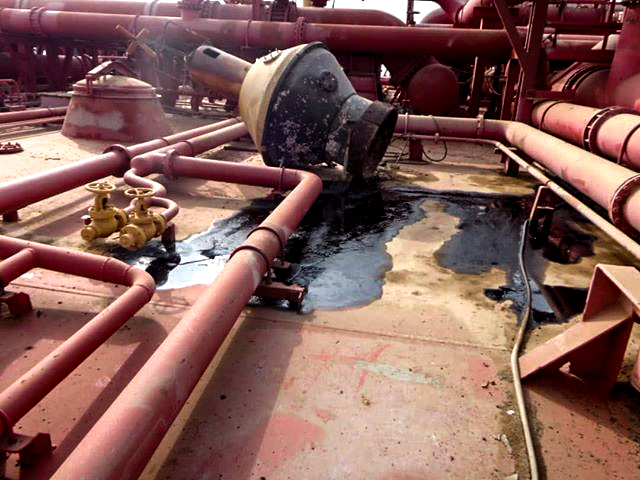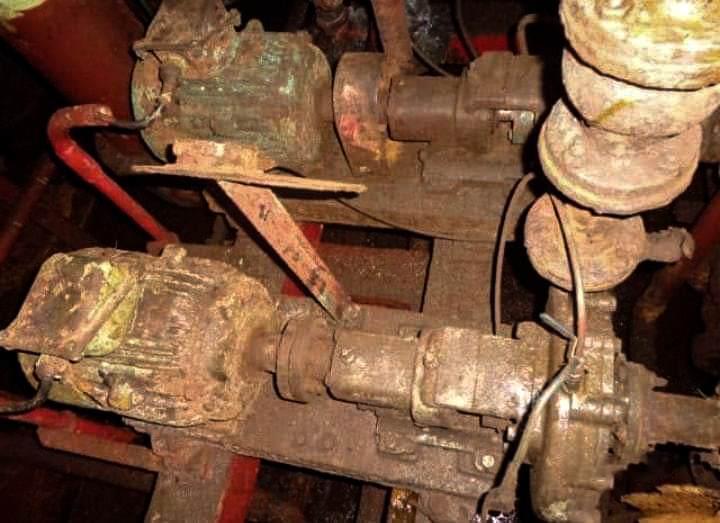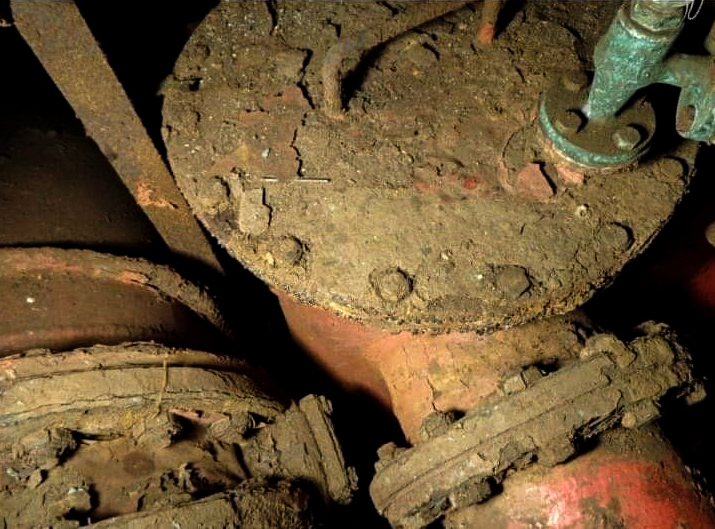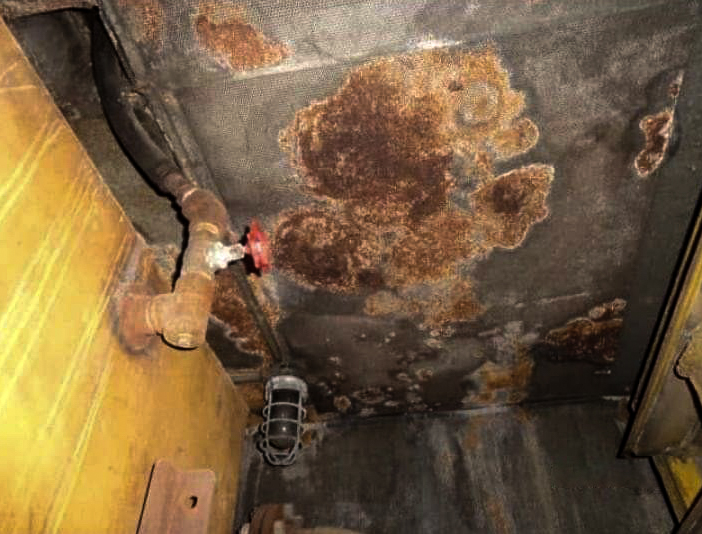- In August, an international effort led by the U.N. averted a massive oil spill in the Red Sea.
- The FSO Safer, a deteriorating oil tanker anchored in Yemen’s Marib Basin, posed a 1.14-million-barrel environmental and humanitarian threat, with a potential $20 billion cleanup cost.
- Even schoolchildren from Westbrook Elementary School in Maryland recognized the urgency and initiated their own fundraising efforts, but most oil companies with historical involvement in the Marib Basin have failed to contribute so far.
- While some nations and organizations stepped up to help, ongoing challenges in securing funding highlight the need for collective responsibility in preventing environmental disasters.
A diverse international coalition of funders — ranging from national governments to oil companies and even U.S. schoolchildren — have averted a potentially catastrophic million-barrel oil spill in the Red Sea, following five years of U.N.-led efforts to mount a rescue mission for the FSO Safer.
Anchored in coastal waters, the Safer oil tanker acted as an export terminal for light crude oil piped to it from the Marib Basin in mainland Yemen. Its operations and maintenance were suspended in 2015, after Yemen’s ongoing civil war broke out in 2014. Since then, it sat disintegrating on its permanent mooring, threatening to spill 1.14 million barrels of oil — four times worse than the Exxon Valdez, with an estimated cleanup cost of $20 billion.
The internationally recognized government of Yemen and its civil war opposition, Ansarallah, were momentarily united in a shared goal this August: offloading the oil to prevent a humanitarian crisis and the environmental devastation that could follow if the tanker broke apart. The U.N. completed the operation on Aug. 11. But the global community dragged its feet when it came to paying the $143 million salvage bill, despite consensus that urgent action was needed. The U.N. had to borrow $22 million to complete the mission, or risk another winter of rough seas with the Safer already on the brink of disaster.

“A lot of people were saying, ‘Yes it’s a problem for all of us,’” the U.N.’s resident coordinator in Yemen, David Gressly, who in 2021 stepped in to broker the stalled collaboration to prevent a spill, told Mongabay. “But when it’s a problem for all of us, it’s actually a problem for no one. And nobody owned it.”
Transfer of the oil to a seaworthy vessel was partly funded thanks to pledged donations from 23 of the 193 U.N. member states. Pledges that states have honored so far cover $93 million of the $143 million tab, with another $10 million yet to materialize. The oil industry and other private parties, including a group of children, donated nearly $20 million.
Safe disposal of the nearly empty tanker still needs to be paid for, and delays to completing the salvage operation may push the final budget up by as much as another $10 million, according to the U.N. Gressly expressed surprise at “the hesitation by the majority of oil and gas producers to contribute, including those that historically operate in Yemen.”
The outstanding $22 million required to pay back the loan is “very modest compared with the very good profits they are making these days,” Gressly said, “and unfortunately the industry itself has put the Red Sea at risk.”

The predicted risk of oil contamination from the Safer if a spill occurred. Image courtesy of Riskaware.
What was at stake?
The hull of the FSO Safer had been eaten away by corrosive saltwater; the engine room was flooded; and puddles of oil were forming on deck, images taken in 2021 show. The Safer’s inert gas system, which stops highly flammable gases that naturally evaporate from crude oil from igniting, was no longer functional, posing a serious explosion risk, according to experts.
Coastal ecosystems would have been heavily impacted, causing a humanitarian disaster in Yemen and other Red Sea nations, if the vessel had sunk or exploded, according to a 2022 assessment carried out by ACAPS, an independent analytical consultancy.
Such events would have likely destroyed coastal livelihoods and disrupted traffic in the Bab-el-Mandeb Strait, which would in turn have compromised global shipping access to the Suez Canal. Closure of the ports of Hodeidah and Saleef would have stopped food imports to Yemeni people already suffering famine and civil war, ACAPS found.
The Red Sea is also considered the world’s largest refuge from climate change for corals. Studies have found northern Red Sea corals tolerate heat increases far higher than other coral species, and are therefore likely to be “among the last major reef systems to survive this century,” biologist Karine Kleinhaus told Mongabay.






Kleinhaus, who specializes in coral research at Stonybrook University in New York, co-authored a 2020 paper calling for immediate action to secure the decaying vessel’s oil, to protect this “global treasure.”
She cautioned that the Red Sea still faces “a slew of very significant stresses that are ongoing and, in some cases, worsening.” Coastal development, overfishing, poor tourism management, and pollution from oil refineries and the 20,000 ships that pass through each year all threaten this important ecosystem, Kleinhaus said.
What did it take?
Transferring the Safer’s cargo to secure storage carries a price tag equivalent to less than 22 minutes of Suez Canal downtime, and under 1/140th of the estimated spill cleanup tab.
Yet convincing stakeholders it was feasible at all given security concerns about operating in a volatile war zone, and then keeping them focused on the core issue of protecting the Red Sea was key, according to Gressly.

Underlying adversarial positions, registration and ownership, and questions about who gets the oil were regular distractions that had to be put aside in the face of potential environmental devastation, Gressly said. “There were often tense moments of skepticism, but they always rose to the occasion of understanding the common threat.”
Lining up the salvage operation was complicated, but the solution was technically quite simple: buy a very large, double-hulled container ship and transfer the oil to it from the crumbling Safer. Once this was finally accomplished, both ships were left anchored off the Yemen coast. The FSO Safer is slated to be scrapped when the outstanding funds are eventually raised.
Collective responsibility
The International Association of Oil and Gas Producers donated more than $12 million, but direct contributions from oil and gas companies were few and far between. A spokesperson for the trade group said its members funded the donation, but declined to share their names or the amounts each gave. A $300,000 donation from Yemeni family-owned Octavia Energy, currently operating in the Marib Basin, was a rare exception.
“Octavia felt compelled to contribute to the FSO Safer rescue operation, given the humanitarian disaster that could unfold if there was a tanker rupture resulting in an oil spill,” Darren Lucas, board member and director of Octavia Energy, told Mongabay.
Other oil and gas producers and trade route stakeholders didn’t feel similarly compelled.

Austrian firm OMV, operating in Block 2S of the Marib Basin, used the FSO Safer up until 2015. OMV has “no entitlement” to the oil pumped from the stricken tanker, already pays its taxes and tariffs, and has invested more than $850 million to develop oil exploration where it has production operations, a spokesperson told Mongabay, when asked whether the company intended to contribute.
ExxonMobil, TotalEnergies, Sinopec, Transglobe and Occidental all owned assets or produced oil in the Marib Basin blocks that fed the pipeline to the FSO Safer, according to a Greenpeace investigation. None responded to Mongabay’s request for comment, but business leaders say they ought to take action.
“The global business community has a stake in ensuring this devastating crisis is solved,” Maamoun Yafi, a spokesperson for HSA Group told Mongabay. The Yemeni goods and services conglomerate donated $1.2 million, as disruption to trade routes and supply chains would have inflicted “long-term operational and economic challenges for companies across the world,” Yafi said.
The Netherlands, Saudi Arabia, the U.S., Germany, the U.K., Qatar, the government of Yemen, Sweden, Norway, Kuwait, Canada, France, the EU, Italy, Finland, Denmark, Japan, Switzerland, Luxembourg, Greece, South Korea, Malta, Egypt and Cyprus all chipped in.

But when it came time to cough up the pledged funds, some of these donor states struggled. Emergency response funds were approved by legislative assemblies, but budget lines for preemption of emergencies like this generally don’t exist, so creating them held up money for months, Gressly said.
When other methods failed to attract sufficient backing, the U.N. resorted to public crowdfunding in 2022, raising a further $300,000.
The ongoing plight of the Safer’s oil inspired future leaders to step up too, when friends from Westbrook Elementary School in Bethesda, Maryland — Eloise, Ellie, Tess, Iliana, Ophelia and Alice — decided they had to help. The group of 7- and 8-year-olds dubbed themselves the Westbrook Green Club and commenced selling lemonade and slime in an effort to “raise millions of dollars,” according to Ellie.

With a top-up from the Tooth Fairy and Ellie’s 5-year-old brother’s birthday money, they eventually contributed $200, and they’ve not stopped there. The girls plan on “more posters and another lemonade stand” since discovering that more money needs to be raised.
Their enthusiasm hasn’t rubbed off on adults running private oil companies, though. Some weren’t confident of the U.N.’s ability to pull off the mission, and many feared legal liability should something go wrong, according to Gressly. This was understandable, he said, “because we were doing things that the U.N. has never done, or very rarely has done, so we didn’t have a track record.”
“Now that the transfer is complete … there’s no reason for those who were skeptical to hesitate to contribute. It’s really time to step forward and make a correct social contribution,” Gressly said. “If third-graders can do it, Exxon can do it, right?”
Elizabeth Fitt is a freelance journalist and photographer based in Beirut, view more of her reporting for Mongabay here.
Clarification 10/12/23: This story was updated to reflect the fact that the International Association of Oil and Gas Producers’ $12 million donation came from its members.
See related coverage:
Jordan scrambles to save rare Red Sea corals that can withstand climate change
Citations:
Krueger, T., Horwitz, N., Bodin, J., Giovani, M. E., Escrig, S., Meibom, A., & Fine, M. (2017). Common reef-building coral in the Northern Red Sea resistant to elevated temperature and acidification. Royal Society Open Science, 4(5), 170038. doi:10.1098/rsos.170038
Kleinhaus, K., Voolstra, C. R., Meibom, A., Amitai, Y., Gildor, H., & Fine, M. (2020). A closing window of opportunity to save a unique marine ecosystem. Frontiers in Marine Science, 7. doi:10.3389/fmars.2020.615733